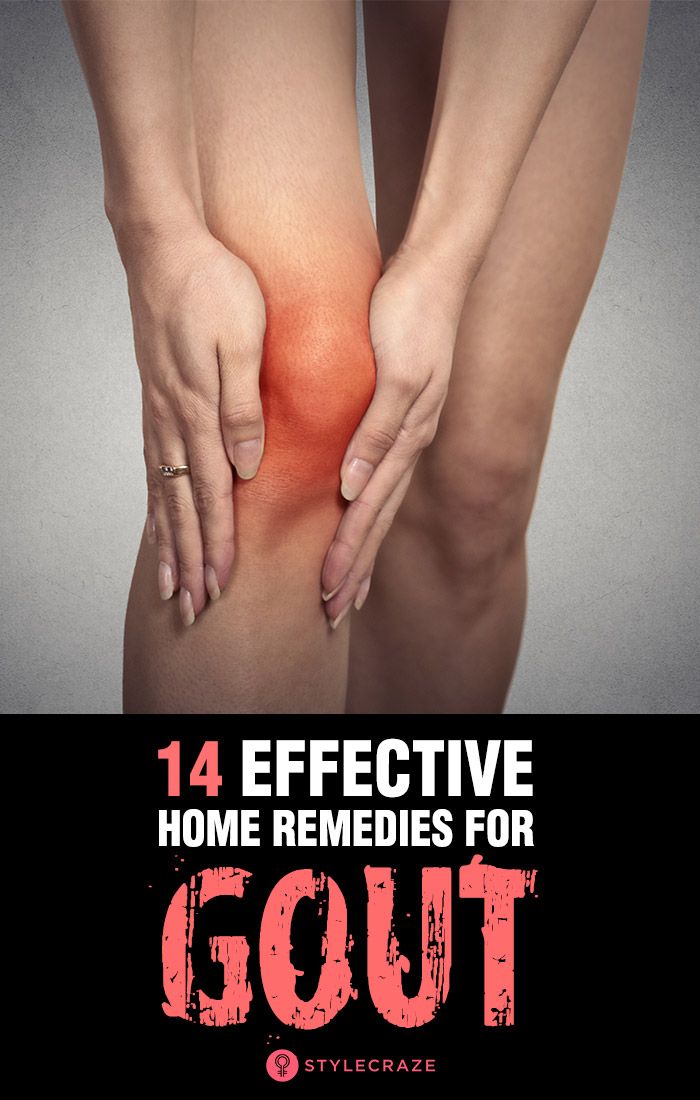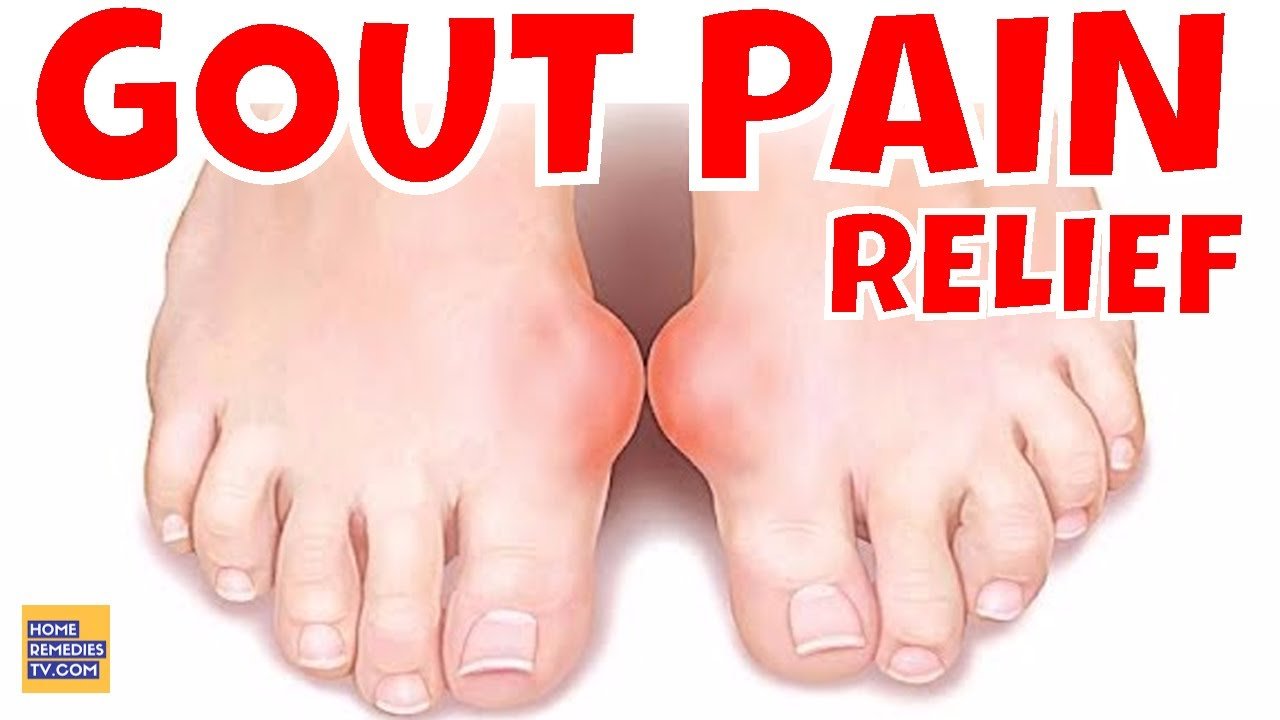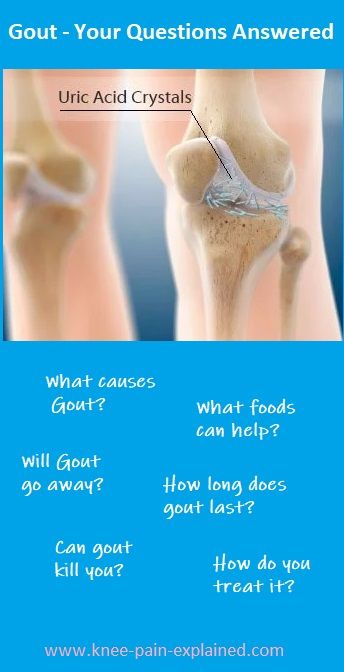How Is Gout Treated
Gout can be effectively treated and managed with medical treatment and self-management strategies. Your health care provider may recommend a medical treatment plan to
- Manage the pain of a flare. Treatment for flares consists of nonsteroidal anti-inflammatory drugs like ibuprofen, steroids, and the anti-inflammatory drug colchicine.
- Prevent future flares. Making changes to your diet and lifestyle, such as losing weight, limiting alcohol, eating less purine-rich food , may help prevent future attacks. Changing or stopping medications associated with hyperuricemia may also help.
- Prevent tophi and kidney stones from forming as a result of chronic high levels of uric acid. Tophi are hard, uric acid deposits under the skin. For people with frequent acute flares or chronic gout, doctors may recommend preventive therapy to lower uric acid levels in the blood using drugs like allopurinol, febuxostat, and pegloticase.
In addition to medical treatment, you can manage your gout with self-management strategies. Self-management is what you do day to day to manage your condition and stay healthy, like making healthy lifestyle choices. The self-management strategies described below are proven to reduce pain and disability, so you can pursue the activities important to you.
Effective Medical Treatment For Gout
The American College of Rheumatology released gout management guidelines in 2012 and updated them in 2020. They recommend drugs classified as urate-lowering therapy for those who have experienced two or more gout attacks in a year as well as for those with joint damage from gout.
Specifically, the organization recommends allopurinol as a first-line treatment for all gout patients, even those with chronic kidney disease. Next in line is febuxostat both are a class of drugs called xanthine oxidase inhibitors.
In addition, the guidelines recommend use of anti-inflammatory medications including NSAIDs, prednisone, or colchicine along with the other medication.
Possible Complications Of Knee Gout
If improperly treated, gout knee can develop into a more severe condition.
Recurrent gout is when a person experiences gouty attacks several times a year. If left untreated, it can cause erosion and destruction of a joint.
Advanced gout occurs when deposits of urate crystals form under the skin in nodules called tophi, which develop in areas such as the fingers, hands, feet, elbows, or Achilles tendon. Tophi usually arent painful, but they become swollen and tender during attacks.
Lastly, as a result of urate crystals in the urinary tract, kidney stones may occur.
Recommended Reading: Are Onions High In Purines
Is A Cortisone Shot For Gout An Option For Immediate Gout Pain Relief
Cortisone is a powerful anti-inflammatory steroid drug that works almost immediately to stop acute gout. Cortisone can be taken by mouth, but side effects are common. In some cases, a cortisone injection into an inflamed joint is very effective. For example, injection for big toe or foot gout can be effective if severe. It is important to use ultrasound to guide a needle into the joint to improve accuracy and effect.
Generally, a cortisone shot for gout such as foot gout often takes a few days to start working. If given early in an acute attack, it can stop it in its tracks.
What Increases Your Chances For Gout

The following make it more likely that you will develop hyperuricemia, which causes gout:
- Being male
Recommended Reading: How Many Cherries Should I Eat For Gout
The Role Of Physical Activity In Prevention Of Gout
Along with diet, physical activity can help with weight loss, and gout has been associated with being overweight.7 in patients with well-established gout, especially if X-rays have demonstrated joint damage in the foot, a low-impact exercise program is reasonable. An exercise program combined with diet in gout can reduce risk for attacks.7 If an attack seems to be coming on in the lower extremity, patients are well-advised to try to get off their feet, since impact seems to worsen gout attacks. Clues to an attack of gout coming on include local swelling, heat, redness, and tenderness in a joint, especially in the foot, ankle, or knee. Some patients have fever and chills as the first warning that an attack of gout is coming on.
Aluminum Foil For Fatigue And Insomnia
Do you wish to look healthy, fresh and attractive, even after a sleepless night? Then youre in the right place because the aluminum foil is your remedy.
To refresh your eyes and skin you need to cut the aluminum foil into small pieces and put them into a freezer for many hours.
Place the frozen aluminum foil pieces on your eyelids, cheeks or face to fresh them up. You need to keep the foil there for at least 15-30 minutes and you will be surprised to see how the traces of fatigue, insomnia and stress will disappear from your skin.
SEE ALSO
Read Also: Cherry Juice For Gout Mayo Clinic
How Long Does Gout In The Knee Last
Gout flare-ups can last for several hours at a time, but you may feel pain in your knee for days or weeks. Some people only have one flare-up in their life, while others have them several times a year.
Keep in mind that gout is a chronic condition, meaning it lasts for a long time and requires ongoing management. Dietary changes and medications can make a big difference, but youll also be at risk of having a flare-up.
Keep in mind that it can also take some time to find the right combination of diet changes and medication that works for you. Dont be discouraged if things dont seem to be improving right away.
What Can Trigger A Gout Attack
Several things can cause the crystals to shake loose into your joint cavity, triggering an attack. These include:
- a knock or injury to the joint
- an illness that may make you feverish
- having an operation
- having an unusually large meal, especially a fatty meal
- drinking too much alcohol
- dehydration
- starting urate lowering therapy, especially at a high dose, or not taking your treatment regularly each day.
Don’t Miss: Are Almonds Bad For Gout
Manage And Prevent Gout And Diabetes
Itâs important to keep your uric acid and blood sugar under control if you have gout and diabetes or want to keep from having them.
Your habits and lifestyle are some of the best ways to do that:
- Eat a healthy diet. Include foods that are low in calories and fat, but high in fiber, to lower your risk of diabetes. Fruits, veggies, and whole grains are best. To protect against gout, you may want to avoid red meat, shellfish, sugary foods and drinks, and alcohol, especially beer. Low-fat dairy foods might protect you from gout, so keep them on the menu.
- Lose weight. Less body fat can lower your uric acid levels and improve your blood sugar. But donât fast or try a crash diet. Quick weight loss can raise uric acid.
- Exercise. Try to get at least 30 minutes of physical activity a day. Exercise can help you stay at a healthy weight, which makes gout and diabetes less likely.
- Manage other health issues. If you have other problems, such as high cholesterol, high blood pressure, or kidney disease, make sure to take care of them. Follow your doctorâs instructions, and take all of your medicines.
Gout & Uric Acid Education Society: âGout and Diabetes: If you have gout, you may be at risk for diabetes.â
Arthritis Foundation: âWhat is Gout?â âFive Conditions Linked with Gout,â âHow Fat Affects Gout.â
CDC: âNew CDC report: More than 100 million Americans have diabetes or prediabetes.â
American Heart Association: âUnderstand Your Risk for Diabetes.â
How Do Health Care Providers Diagnose Gout
The most reliable method to diagnose gout is by demonstrating uric acid crystals in joint fluid that has been removed from an inflamed joint . Specially trained physicians, such as a rheumatologist or orthopedist, can carefully remove fluid from the joint. The fluid is then examined under a microscope to determine if uric acid crystals are present. This is important because other medical conditions and diseases, such as pseudogout and infection, can have symptoms similar to gout.
Also Check: Allopurinol Side Effects Alcohol
Treatment For Knee Gout Symptoms
As mentioned earlier, moving swiftly to neutralize the acidic reaction as early as possible is the best course of action both as gout treatment and gout prevention. There are several suggestions that can be implemented:
- Mix baking soda and water and drink it this is the fastest way to neutralize the uric acid. This can help to dissolve the crystals that have already formed and also work to keep the uric acid that hasnt crystallized in solution
- Soak towels in warm water and Epsom salts and wrap the knee then alternate with towel-wrapped icepacks
- Eat fresh celery, apples, cherries, and bananas these are strong antioxidants and alkalizing foods
- Drink clean filtered water 8oz every half hour until all knee gout symptoms have completely disappeared
How Do We Prevent Gout Flare

Generally, we need to get your uric acid levels lower to prevent gout flare-ups. Firstly, you need to treat lifestyle factors. Examples include losing weight, reducing alcohol intake, and a healthy diet. Secondly, your doctor may prescribe medications to lower uric acid. The most common drug is allopurinol. It is important to wait until an acute attack has settled before starting this drug. Speak to your doctor about whether you should consider this drug. In general, preventative medication such as Alluprinol is useful if youre uric acid levels are high .
When you start taking Allopurinol, you should take another tablet such as colchicine for about 4 weeks to prevent another attack.
Typically, a change in lifestyle can reduce uric acid levels. Examples of foods that increase purine and should be avoided include organ meats, sardines, anchovies, prawns, board beans, and foods containing a high concentration of high fructose corn sugar. In addition, yeast and yeast-based foods such as frozen foods and canned food can be problematic. Also, sugar-sweetened beverages and alcoholic drinks increase acid levels. Generally, wine is better than hard liquor or beer.
On the contrary, foods that reduce uric acid include cherries, fruit and vegetables high in vitamin C, low-fat dairy products, and a vegetarian diet. Also, keeping well hydrated can prevent and treat an attack.
Also Check: Almond Milk Gout
What To Do During An Attack
You should:
- take any medication you’ve been prescribed as early as possible after you notice an attack this should start to have an effect within two or three days
- rest and raise the limb
- avoid knocking or damaging the affected joint
- keep the joint cool remove surrounding clothing and apply an ice pack, such as a bag of frozen peas wrapped in a towel
- ensure you’re well hydrated
Apply the ice pack to your joint for around 20 minutes. Don’t apply ice directly to your skin and don’t apply it for more than 20 minutes at a time because this could damage the skin.
If necessary, you can keep reapplying an ice pack to your skin during an attack, but you should wait until your skin has returned to a normal temperature first.
What About Prp Injections For Gout
PRP injections for gout are only reserved for special cases. Just like cortisone injections, PRP injections are anti-inflammatory and will have a beneficial effect. This effect is probably better if the injected joint has underlying degenerative changes such as osteoarthritis. Nevertheless, the effect of PRP is less than cortisone. Overall, we would only consider PRP injection for gout if the risks of a cortisone injection are too great.
You May Like: Almond And Gout
How Is Pseudogout Treated
The type of pseudogout treatment depends on several factors, including your age, other medications youâre taking, your overall health, your medical history, and how severe the attacks are. Drugs to treat pseudogout include:
- Anti-inflammatory painkiller drugs, also calledNSAIDs, generally are prescribed to treat sudden and severe pseudogout attacks. NSAIDs — like ibuprofen and naproxen — usually reduce inflammation and pain within hours.
- Corticosteroids may be prescribed if you canât take NSAIDs. Steroids also work by decreasing inflammation. They can be injected into the affected joint or given as pills.
- Colchicine, a gout drug, is sometimes used in low doses for a longer period of time to reduce the risk of repeated attacks of pseudogout.
Anti-inflammatory medications are usually continued until the pseudogout attack goes away. Symptoms are often better within 24 hours after treatment begins.
Show Sources
How Does Physical Activity Help You In Preventing Gout
Although diet is important, physical activities are vital to maintaining a healthy weight. Being overweight is one of the factors contributing to the development of gout. For patients who have serious gout conditions and have joint damages in their feet, it is important to do a low-impact workout. The physical workout and proper diet will work together to keep you safe from gout.
When gout has attacked the lower part of your body, you may try to get off your feet. Swelling, redness, heat, and tenderness in your joints are some symptoms of the attack. You will find swelling in your knees, ankle, and feet.
Other lifestyle habits to reduce the risk of gout-
- Keep away from protein-rich and low-carbohydrate foods
- Eat a healthy diet to reduce diabetes, obesity, and high blood pressure
Don’t Miss: Side Effects Of Allopurinol And Alcohol
The Role Of Diet In Gout Prevention
Dietary control may be sufficient in a patient with mildly elevated uric acid, for example, 7.0 mg/dL
For those with a higher level, for example, 10.0 mg/dL, diet alone will not usually prevent gout. For the latter, even a very strict diet only reduces the blood uric acid by about 1 mg/dL- not enough, in general, to keep uric acid from precipitating in the joints. The cutoff where patients with gout seem to dramatically reduce their number of attacks is when their uric acid level is taken below 6.0 mg/dL.4
What Are The Symptoms Of Gout In The Knee
The main symptom of gout in the knee is pain and discomfort in the surrounding area. Keep in mind that gout is often unpredictable, regardless of the joint its affecting. You might go weeks or even months without any symptoms, only to wake up with a burning pain in your knee.
In some cases, gout starts out in one of your big toes before moving on to other areas, such as your knee. Over time, these flare-ups may last longer than previous episodes.
Other symptoms you might feel from gout in your knee include:
- tenderness
Don’t Miss: Almonds And Gout
Gout In The Knee: Telltale Signs
Knee gouts distinct symptoms include:
- Inflammation in and around the knee joint
- A warm or hot feeling in the knee
- Skin reddening or shininess
- Skin flaking and itching when inflammation subsides
- Extreme pain and sensitivity
Because gout pain in your knee can be so severe, you may not be able to tolerate the slightest touch or put any weight on your knee.
Gout attacks known as flares come suddenly and can even wake you in the middle of the night. These can last anywhere from a few days to over a week.
What Else Should I Ask My Healthcare Provider About Gout

Consider asking your healthcare provider:
- What is causing the gout?
- Do I have any joint damage?
- What can I do to prevent future attacks?
- Can any gout medications help me?
- How long will I need to take gout medications?
A note from Cleveland Clinic
Gout is a painful form of arthritis. Extra uric acid in your body creates sharp crystals in the joints, leading to swelling and extreme tenderness. Gout usually starts in the big toe but can affect other joints. Gout is a treatable condition, and the uric acid level can be decreased by medication and lifestyle changes. Talk to your healthcare provider about medications that can reduce uric acid levels. They can also discuss changes you can make to your diet and lifestyle to prevent and reduce gout attacks.
Last reviewed by a Cleveland Clinic medical professional on 11/15/2020.
References
Read Also: Allopurinol And Alcohol Interaction
Are There Treatments For Gout In The Knee
Yes, and were eager to share them with you. We offer diverse treatments that have given our patients long-term relief for their knee gout pain and movement issues.
First, we talk about things you can do at home, like icing your knee or using heat on it. We also recommend and teach you how to do healing exercises that help restore function to your knee and minimize discomfort.
We also offer in-office manual physical therapy, stretching regimens, and exercises that complement the ones you do at home to hasten your healing, but we make sure healing is smartly paced. Were proud to offer state-of-the-art rehabilitative equipment right here in our office.
We create a program based on the activities you do routinely. After you heal, we want you to enjoy the activities you did before and perform routine daily movements, free of pain.
An innovative treatment we offer for knee pain is electrophysiological stimulation, or e-stim. This treatment involves sending an electrical current to your targeted treatment area, which:
- Treats inflammation effectively
- Strengthens muscles and improves their functioning
- Reduces pain
In addition to treating your knee pain, we make recommendations about how to keep gout at bay, which include losing weight if necessary, avoiding foods and beverages that are high in purines, like red meat, shellfish, and beer, and changing certain medications.
You Might Also Enjoy…